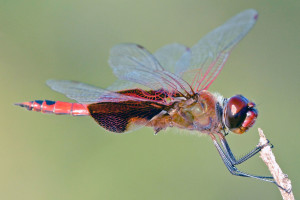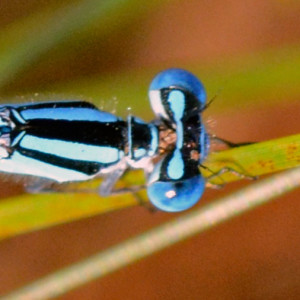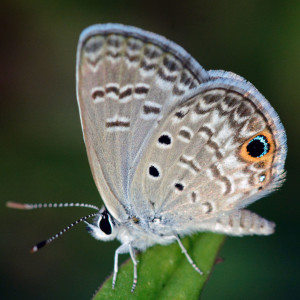I haven’t seen nearly as many dragonflies in the back yard this summer as I have in years past; I’m not sure why. But it seems that nowadays I have to travel if I’m to see anything like the diversity or abundance of species I’d enjoyed in my back yard for the four years we’ve been in the new place. So the Saturday morning of Labor Day weekend I went to Yamato Scrub, camera in hand, hoping to score an odonate fix.
I managed to find quite a few, as well as some lovely little butterflies. As usual, I saw many more than the few who cooperated for the camera. Here are two, one each from the dragonfly and damselfly groups.
First, the lovely red dragonfly Tramea onusta, called the Red Saddlebags (there is a Carolina Saddlebags as well; almost indistinguishable except that the black spots on the tail in Red are only on top, whereas in Carolina, the black goes all the way down the sides):

And here’s a damselfly. This one’s a bluet, I suspect Atlantic (Enallagma doubledayi), but I can’t rule out Familiar (E. civile) without having the specimen in hand and an argument with specialists:

I think the broad bar of blue connecting the “eyespots” (called postocular spots by specialists) on the back of the head argues strongly in favor of Atlantic over Familiar, but it’s by no means conclusive. Here’s the bit I’m talking about:

According to Paulson, who wrote the book on these bad boys, “postocular spots larger in Familiar and without occipital bar, but overlap.”
Bonus picture: Ceraunus blue butterfly, Hemiargus ceraunus:

I love how the blue in the tailspot lights up so brilliantly in the right light.
References
Paulson, D. R. 2011. Damselflies and Dragonflies of the East. Princeton: Princeton UP.
